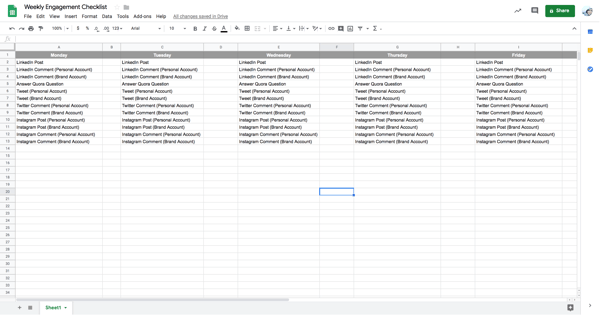Before I read Atomic Habits by James Clear, I had completely bought into the MVP mentality.
Ship it well, ship it fast.
However, in the bustle of completing projects and delivering them ASAP, I wasn’t learning as much as I could.
After I read Atomic Habits, I saw the flaws with that approach.
Getting four mediocre articles done in 2-3 days wasn’t helping me improve my writing skills.
Running one 5k then not running for a month wasn’t helping me become a better athlete.
Scheduling a week’s worth of posts for my blog's Facebook page then not publishing anything for three weeks wasn’t helping me engage with my followers.
Now, I break those activities into smaller, repeatable, daily actions.
By investing in incremental improvement, I take things slowly and enhance my efforts little-by-little, especially when it comes to social media engagement.
How To Increase Social Media Engagement Daily
Before Atomic Habits, I’d spend two or three hours on a random Saturday or Sunday afternoon scheduling a few posts for my blog or sharing an article or two I wrote for Lean Labs.
I was going through the motions of social media, but I wasn't growing my network or connecting with anyone. I wasn't being customer centric or helpful to my audience.
Now, I spend ten or fifteen minutes each day crafting thoughtful posts and comments per channel.
Think about it. If you post an awesome article or comment once a day on Instagram, Facebook, Twitter, and Quora, you won't get results right away. But in a few months, that’s over a hundred unique, thought-out posts per channel.
“This is the meaning of the phrase atomic habits—a regular practice or routine that is not only small and easy to do but also the source of incredible power; a component of the system of compound growth.”
― James Clear
While it seems like a drop in the bucket, these smaller engagements are key to getting more significant results. And the process doesn't need to be complicated.
1. Create A Daily (Or Weekly) Checklist
Before I go into the details of creating a daily or weekly engagement checklist, I have one rule. Your list cannot include automated social posts. I’m not anti-automation for social media, but it has its time and place.
Because how much are you learning about your product, service, or industry if you’re automating all of your posts?
How are you contributing to online communities if you’re using a bot (or a social media intern) to post vague comments like “Nice work!” or “I love it!” on these platforms every once in a while?
Why even bother?
Thus, when you put together a checklist, go into it knowing that you’re going to be the one doing the work.
The second thing to consider is that it’s going to be tempting to bite off more than you can chew.
I know this because I did it. When I started this experiment, I literally had a 20 point checklist I felt I could achieve each day. And of course, I could not. I shortened the list to a few activities a day and I keep track of them in a simple spreadsheet (above).
2. Keep A Consistent Blog Schedule
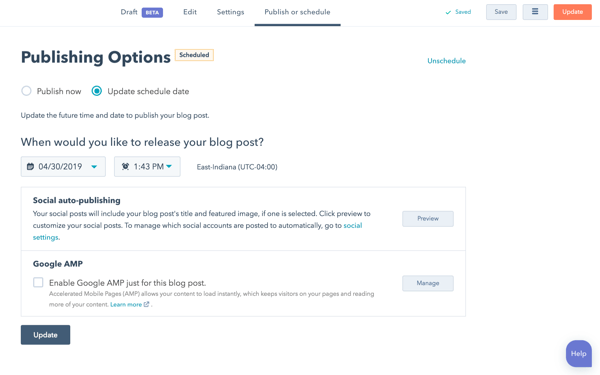
If you don’t post regularly, but still have a backlog of content to pull from, that’s fine. However, in the long-term, you should work towards posting new content a few times a week. Not only is it good for ranking in Google and pulling in organic traffic, it provides a variety of topics for you to discuss on Quora, LinkedIn, and Facebook.
You can cover more ground and, eventually, people will see you as a subject matter expert. If they find one of your Quora answers really helpful, for instance, they can go to your profile and check out your other answers. They might come and subscribe to your blog or download an offer from your website.
3. Create A Backlog Of Repurposed Assets
If it’s going to be a while until you can create a consistent posting schedule, create a backlog of repurposed content from what you already have.
For example, if you have a great blog post or awesome podcast, repurpose that asset into a video, LinkedIn article, or piece for Medium.
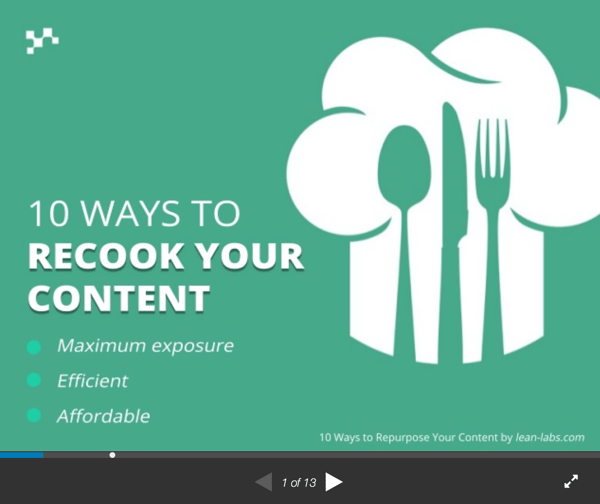 [Go To Slideshare]
[Go To Slideshare]
The best way to repurpose effectively is to create a step-by-step process document with clear instructions.
I'd repurpose an asset a week (very well) and put them in a Google Drive folder for everyone to access. And don't be afraid to share content multiple times. Social media feeds are hectic, and your audience may miss content the first time around.
If you find social media to be overwhelming, you can scale back on the engagement checklist and focus on a few high-impact activities per week. It depends on your goals.
For instance, if you want to build yourself up as an influencer, it may be more worthwhile for you to spend your time engaging on Twitter or engaging in Facebook Groups, rather than covering every channel.
Personally, I spend a lot of my time engaging on Quora and LinkedIn. It's more valuable to spend time on those two platforms, rather than spreading myself thin across every channel I can think of.
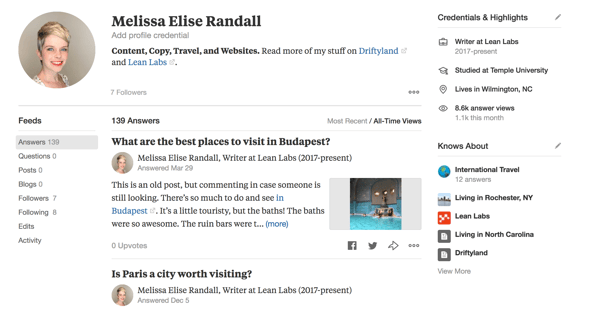
You can designate other lower impact activities, such as manually commenting on Instagram or LinkedIn posts to a social media community manager.
An additional perk of hiring a part-time or full-time social media manager is that you can scale these efforts faster, and get an expert to focus on weaving your social activities into your overall inbound marketing strategy.
5. Get Your Non-Marketing Team Members Involved
If you can't get someone on social media full-time and you’re not in a good position to be on social media each day, divide and conquer. You can create a team engagement process similar to the one I recommended making for yourself. And participating in social media engagement should go beyond your marketing team.
You may get some resistance, but people in roles of expertise should own those areas of expertise online. Your developer can focus on contributing to development forums, your graphic designer can focus on posting 1-2 graphics on Instagram, and someone on your sales team can offer tips and guidance in a weekly Facebook live.
One of my favorite things about the team at HubSpot is how active the employees are online.
Here's Dharmesh Shah, the co-founder of HubSpot tweeting about startup life.

And here's Flora Wang, a product manager at HubSpot, talking about women in tech.
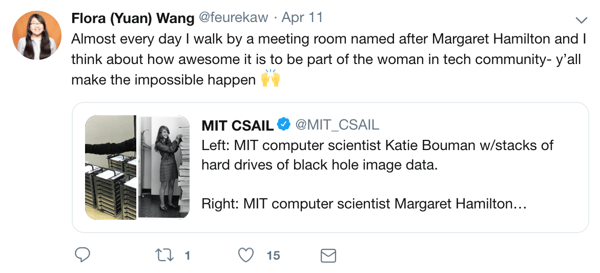
They're always providing value and thought-leadership, regardless of their department or how high they are on the ladder.
6. Set A Daily Topic Schedule
A big part of social media engagement is getting your audience to look for your content. And unless you’re giving away free iPads or something every week, this can be difficult to do. That’s why you need to train your audience to look for the content they need from your brand.
In my experience, this is easier when you have a designated weekly schedule for social media.
For example, companies like Lonely Planet already post a variety of content, such as:
Photo Contests
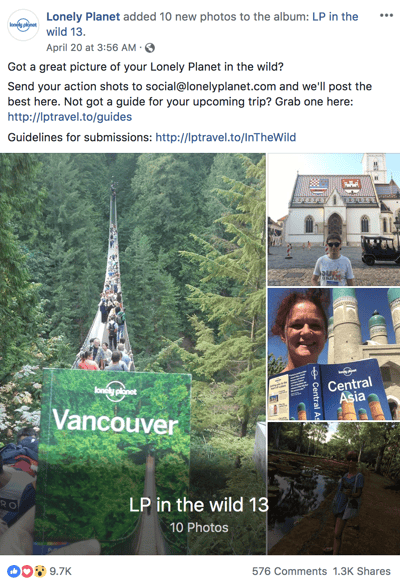
Product Releases

Pop Culture Tie-ins
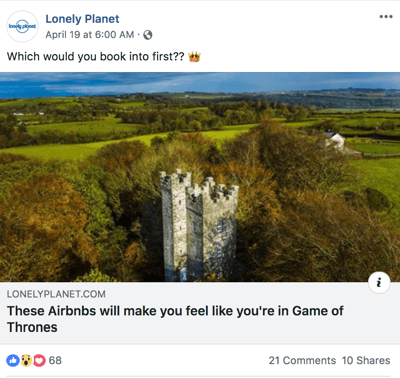
Travel News

They could assign each style of post to a different day of the week. For instance, they could do a Facebook Live every Monday with cheap flights, a podcast on Tuesday that features an influential person in travel, a Q&A on Wednesday about traveling to dangerous or off the grid locations, and so on.
After a few months, you can start measuring engagement from these daily posts and tweaking the time of day you post, the duration of Facebook Live sessions, podcast episodes or video content, and optimizing your approach.
I recently read an interesting article on Vogue (of all places) about the value of Instagram comments. Sia Cooper, a fitness blogger, accumulated one million followers, partially due to her high engagement (comments) on verified Instagram accounts.
Why?
Because comments are more valuable than likes.
And the proof is in Instagram's algorithm.
Check out this post from my own Instagram feed. Despite the other 349 comments, for some reason, this comment is shown.
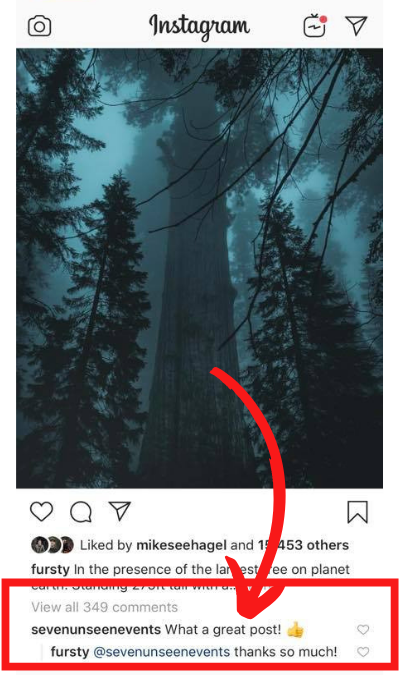
Typically, these "sticky" comments come from accounts that Instagram considers to be highly engaged.
The takeaway here? You can't just “like” something once in a while and assume you're building relationships. Go for the comment. It tells the algorithm that I’m active on the platform and helps me meet the people I follow.
Learning From Social Media Engagement
Aside from increasing engagement, a benefit of being more active and more genuine on social platforms is learning more about your customer. The more you engage on Quora, Reddit, Twitter and the rest, the more you can converse and connect with your audience. All of these insights can fuel your inbound marketing strategy, inspiring better, more engaging content.




